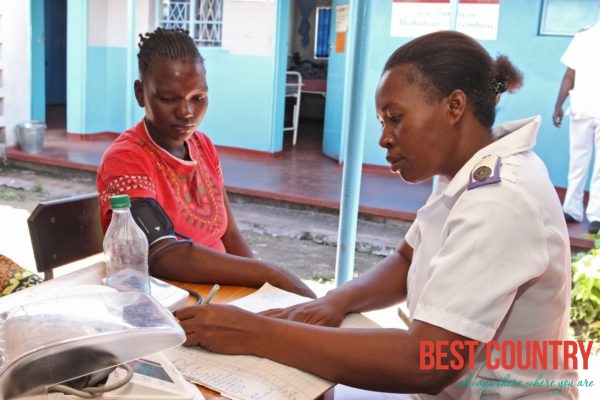Health in Zimbabwe

Health status
Life expectancy
Zimbabwe had an average life expectancy of 55.68 years according to the 2014 CIA estimate.
Cholera
A cholera epidemic in Zimbabwe that began in August 2008, swept across the country and spread to Botswana, Mozambique, South Africa and Zambia. By 10 January 2010 there had been 98,741 reported cases and 4,293 deaths making it the deadliest African cholera outbreak since 1993.The Zimbabwean government declared the outbreak a national emergency and requested international aid.
HIV/AIDS
Zimbabwe was and still is one of the countries that were strongly afflicted by HIV/AIDS.[8] Many of the males were affected, hence leaving many widowed females. This happened to bring on a sense of independence and the role of the breadwinner for the females – changing the roles of the sex.
The immensity of this health issue can be clearly determined through this particular statistics: every one in five children are orphaned due the HIV/AIDS crisis – making an overall number of approximately 1 million orphans due to AIDS in 2011.
In 2011, the amount of number people living with HIV/AIDS reached approximately 1.2 million, when Zimbabwe had a population of approximately 12.75 million at that time. Therefore, the amount of people infected with HIV/AIDS made up for around 9.41% of the population.
Tuberculosis
Zimbabwe is ranked among the 22 countries, where tuberculosis occurs frequently. In 2000, the incidence rate of tuberculosis reached 726 incidents per 100,000 people, where as in 2011, the number decreased to 603 incidents per 100,000 people. In 2011, the number of incidences of tuberculosis in Zimbabwe was 80 thousand, and the amount of deaths from this disease was 3.4 thousand.
Africa is the top continent where tuberculosis occurs frequently, as it reached an estimated value of 2.3 million for incidences in 2010 by the World Health Organization.
Maternal and child health
According to the UNDP, Zimbabwe has eight Millennium Development Goals, the fourth is Child Health. Zimbabwe’s infant mortality rates have been decreasing. In 2000, the infant mortality rate was 63 deaths per 1000 people, whereas in 2010, the infant mortality rate was 45 deaths per 1000 people.
This is an optimistic result from the goals that the Zimbabwean government – the Ministry of Health and Child Welfare – has set up, in order to decrease the infant/child mortality rates.
Some of the most common diseases that these young children are facing are hunger: iron deficiency anaemia, vitamin A deficiency, and mentally impaired (iodine deficiency), and childhood diseases: acute respiratory infections, diarrhoeal disease, and malaria. Among these, the most common disease is 35,000 children suffering with mentally impaired disabilities due to iodine deficiency.
Many of the commonly occurring diseases which often to lead to death are regarding hunger – nutritional deficiencies are causes of much infant mortality in Zimbabwe. HIV/AIDS is also an immense conflict in Zimbabwe – it also affects their infant mortality. HIV/AIDS is transmitted many ways, one of which is through the process of giving birth – passing through the birth canal and breast feeding.
As the number of mothers infected with HIV/AIDS increases, the number of infant mortality due to HIV/AIDS will also increase. HIV/AIDS is also one of the eight Millennium Development Goals that is wished to be achieved by Zimbabwe.
Ranking 14th as the country with the highest rate of maternal mortality, Zimbabwe had 570 deaths per 100,000 live births in 2010. It has decreased significantly from 2000, when the maternal mortality rate was 640 deaths per 100,000 live births.
According to the UNDP, maternal death mainly occurs due to AIDS-related diseases, hemorrhaging, and hypertension. In many cases, the pregnant women and mothers lack in iron, causing iron deficiency anaemia; some women also deal with neural tube birth defects – all of these which may be passed onto their children.